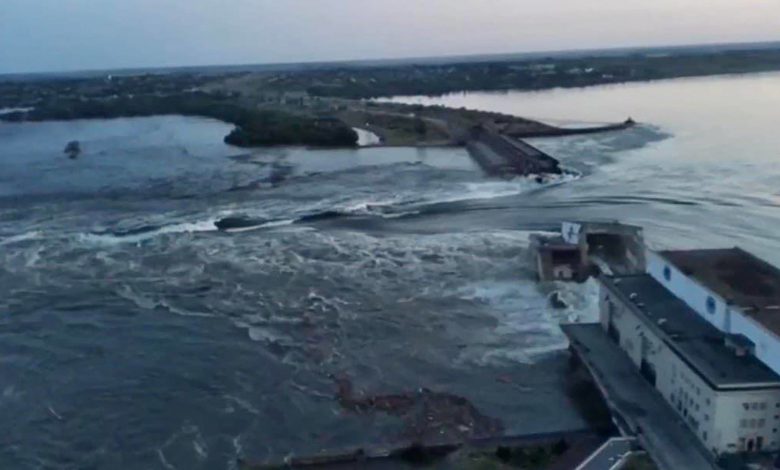Kakhoovka and Zaporizhia: Is Ukraine maneuvering with water and nuclear?

With water and nuclear, Ukraine launches a different kind of counter-attack against Russia, starting from the Kakhovka Dam and reaching the Zaporizhzhia plant, two Moscow-controlled sites.
For Kyiv, it seemed to go beyond who was behind the partial destruction of the dam, or who targeted the Zaporizhzhia region that includes a nuclear power plant, to say, how do events invest in bombing her opponent?
Hiring observers believe that it amounts to a war game designed to play the card of internal and external sympathy, especially of the West, in order to accelerate the pace of pressure on Russia, or to imply that the balance of war has changed in Kiev’s favor.
The Russian military-controlled Zaporizhzhia power plant is close to the frontline after part of the destruction Tuesday of a dam in southern Ukraine that was being used to cool the plant and prevent a nuclear accident.
Assault repulsion
“The Ukrainian offensive in the Zaporizhzhia region was also expected, with Russia on Thursday evening repelling an offensive by 1,500 Ukrainian troops after a two-hour battle.”
“An attempt was made to penetrate our defenses in the Zaporean region,” said Russian Defense Minister Sergei Shoigu. “The enemy was stopped and retreat after heavy losses.”
He also noted that Ukrainian forces used 150 armored vehicles in their attack.
“It was not the first such attack this week, and Moscow has already repulsed several attacks by Ukrainian forces.”
“Zaporizhzhia is at the heart of the conflict, having been targeted several times by shelling and cut off from the power grid seven times since it came under Russian military control on 4 March 2022.”
Although the IAEA confirmed there was no nuclear danger following the partial destruction of the dam, Kiev has tried to capitalize on the main event and the Western alignment, intensifying its media offensive against Russia.
But Moscow responded with a counter-accusation supported by experts who believe it makes no sense for Russian forces to bomb a dam under their control.
However, Kiev continued to level accusations, focusing mainly on the human dimension of the incident, especially after the floods caused by the bombing of the dam submerged more than 20 villages.
Unexplained anxiety
There was repeated reassurance of no nuclear danger, while Kiev maintained unwarranted concern.
The International Atomic Energy Agency confirmed on Twitter that there was no “immediate nuclear threat,” adding that its experts on the site were “monitoring the situation closely.”
The same thing was confirmed by the French Institute for the Protection from Radiation and Nuclear Safety, at the same time excluding “any risk of flooding (near the plant), because the dam is downstream rather than upstream”, 150 kilometers away.
The Moscow-appointed administration in the region said the situation was under control, stressing that “there is no threat to the safety of the Zaporizhzhia plant because the water level in the cooling basin has not changed.”
However, Ukraine seemed overly concerned, to the extent of going against the facts. In a letter to the press, Ukrainian presidential adviser Mykhailo Podoliak said, “The world finds itself once again on the brink of a nuclear catastrophe because the Zaporizhzhia plant has lost its cooling source, and this danger is now rapidly growing.”
False warnings and attempts to scare off a nuclear catastrophe raise doubts about the veracity of the Ukrainian accusations against Russia, especially in light of the precise data provided by Moscow on the two attacks.
“Russia explained that the Kiev regime not only launched intense artillery attacks on the dam on Tuesday night, but also deliberately raised the water level of the Kakhovka reservoir to critical by opening the dam gates at the hydroelectric power plant.”












